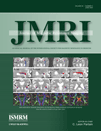Lower extremities magnetic resonance angiography with blood pressure cuff compression: Quantitative dynamic analysis
Abstract
Purpose
To quantitatively evaluate changes induced by the application of a femoral blood-pressure cuff (BPC) on run-off magnetic resonance angiography (MRA), which is a method generally previously proposed to reduce venous contamination in the leg.
Materials and Methods
This study was Health Insurance Portability and Accountability Act (HIPAA)- and Institutional Review Board (IRB)-compliant. We used time-resolved gradient-echo gadolinium (Gd)-enhanced MRA to measure BPC effects on arterial, venous, and soft-tissue enhancement. Seven healthy volunteers (six men) were studied with the BPC applied at the mid-femoral level unilaterally using a 1.5T MR system after intravenous injection of Gd-BOPTA. Different statistical tools were used such as the Wilcoxon signed rank test and a cubic smoothing spline fit.
Results
We found that BPC application induces delayed venous filling (as previously described), but also induces significant decreases in arterial inflow, arterial enhancement, vascular-soft tissue contrast, and delayed peak enhancement (which have not been previously measured).
Conclusion
The potential benefits from using a BPC for run-off MRA must be balanced against the potential pitfalls, elucidated by our findings. J. Magn. Reson. Imaging 2009;29:1450–1456. © 2009 Wiley-Liss, Inc.




